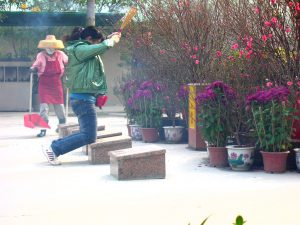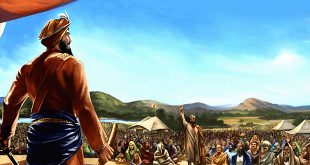Buddha Purnima in Sri Lanka
At Anuradhapura a wonderful convergence of the modern and the archaic may be experienced. On May and June full moon days, the festivals of Wesak and Poson celebrate, respectively, the Buddha’s birth, enlightenment and parinirvana, and the introduction of Buddhism to Sri Lanka. At such festivals, Anuradhapura is enlivened by hundreds of thousands of devotees. For the modern day visitor, one of the great pleasures is touring Anuradhapura on a rented bicycle.
Polonnaruwa (northeastern Sri Lanka): While Anuradhapura evokes the austerity of early Singhalese Buddhism, the later site of Polonnaruwa, wonderfully situated on Lake Topawewa, offers an unparalleled view of medieval Buddhist sculpture and architecture. There the visitor may see the immense recumbent parinirvana Buddha and the 25-foot (7.5m) rock-cut figure of Ananda standing by the head of the Master. There too is the colossal meditating Buddha, and the famous sculptured portrait of the sage-king Parakramabahu overlooking the lake and in contemplation of a manuscript.
Equally dazzling are the early 13th-century monuments situated on the “Great Quadrangle”. These include the classically proportioned pyramidal brick stupa (Sat Mahal Pasada), the carved stonework of the “temple of the tooth relic” (not to be confused with the Temple of the Tooth in Kandy) and the waving lotus-stem-shaped columns of the Nissanka Lata Mandapaya.
Just as Anuradhapura was abandoned by the 8th century, Polonnaruwa was finally conquered by the Tamils in the 15th century. The art of Polonnaruwa represents the final flowering of Singhalese Buddhist art, still matchlessly preserved in land-locked jungle.
Buddha Purnima in Thailand

Bangkok and Ayutthaya: Much important early and medieval Thai architecture was ruined in southeast Asian wars, but impressive 19th and 20th century Buddhist temples abound in Thailand, and in many parts of the country there are lovely archaeological sites. In Bangkok, the Wat Phra Kaeo temple, built by King Rama 1 (1782-1809) in the precincts of his Grand Palace, is a spectacular monument to the Theravada Buddhist revival initiated in the 19th century. This temple is a centre of Thailand’s religious life, symbolizing the close bond between the sangha (religious community) and state, and houses the “Emerald Buddha”, a figurine of national importance to modern Thai people.
The southern Thai Ayutthaya period of the 14th to 18th centuries brought an influx of new architectural ideas from Sri Lanka. Perhaps the most beautifully preserved of Thailand’s medieval monuments are at the Ayutthaya historical park, north of Bangkok. Of special interest are stupas with characteristic Thai “lotus bud” domes, and temple towers showing the influence both of medieval Khmer design and of “honeycombed” south Indian shikhara towers.
Buddha Purnima in Cambodia
Angkor Wat: After a horrifying period of war, the Hindu temple complex of Angkor Wat and the Buddhist Angkor Thom are again accessible. Angkor Thom was the creation of the Khmer “god-king” Jayavarman VII (1181-1219), who converted to Mahayana following the destruction of Angkor by the Cham (Vietnamese) during his father’s reign. Jayavarman’s Buddhism seems to have been a revised version of the Brahmanical religion which previous Khmer kings had exploited to deify their own persons. The central deity in Jayavarman’s religion was Lokeshvara, “Lord of the Worlds”, and rebuilding Angkor Thom on a stupendously grand scale, the king created a “Buddhist” city as a monument to Lokeshvara, who was an aspect of Jayavarman’s divine self. This convergence of king and deity is still visible in the portrait masks of Jayavarman carved on the four faces of the Bayon temple towers of Angkor Thorn.
Like Borobudur and many other southeast Asian temples, Angkor Thom was conceived as a model of the Buddhist universe. At the centre of an immense complex of shrines is the great Bayon temple with its cluster of five towers, the tallest of which represents Mount Meru, the cosmic axis. The whole of Angkor was moated with 100 yards (90m) of water and criss-crossed by a brilliantly engineered system of canals: the water motif symbolizing the cosmic ocean and the world’s four sacred rivers and – not least – acting as an irrigation system. Much of the power of Angkor Thom emanates from a profusion of hybridized
Hindu-Buddhist iconography, carved in a wild, sweet style on the gates and terraces of Jayavarman’s temple-mountain. The god-king’s portrait gazing across his shattered domain adds sinister pathos.
 Kids Portal For Parents India Kids Network
Kids Portal For Parents India Kids Network







